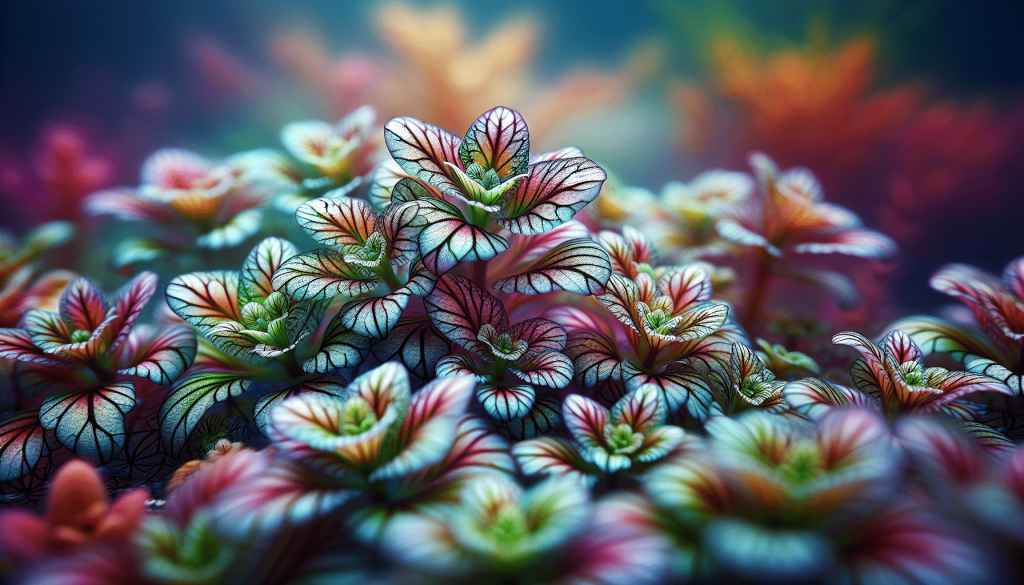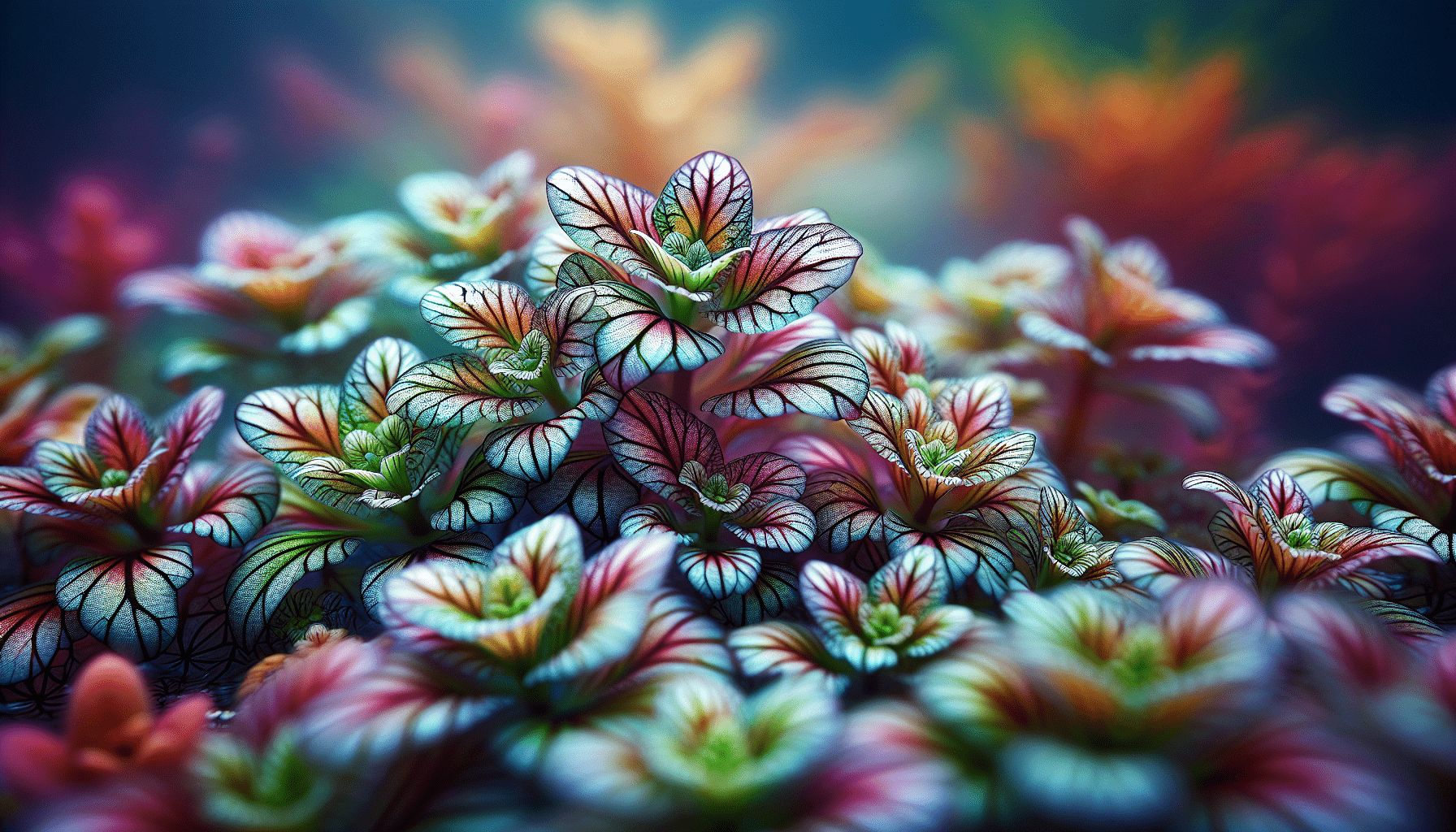Discover the fascinating world of aquatic plants with a focus on understanding the key differences between alligator weed and other invasive species that might be lurking in your local waterways. Alligator weed, with its dense mats and rapid growth, poses a unique challenge in aquatic environments compared to its invasive counterparts. By examining its specific characteristics and how it stands apart from other troublesome plants, you will gain insights that can help in identifying and managing this persistent invader. Dive in and protect your waters with confidence!
Key Differences Between Alligator Weed And Other Invasive Aquatic Plants
Have you ever wondered what sets alligator weed apart from other invasive aquatic plants? If you’re looking to delve into the fascinating world of aquatic plants and the particular traits that make some of them nuisances, you’re in the right place. Understanding these differences is crucial for managing and controlling their impact on our waterways, ecosystems, and even our lives.

Introduction to Invasive Aquatic Plants
Invasive aquatic plants are species that, when introduced to water bodies where they are not native, can cause significant environmental, economic, or ecological harm. These plants typically grow aggressively, outcompeting native flora, obstructing waterways, and disrupting local ecosystems.
Why Understanding Aquatic Weeds is Important
Knowing the specifics about invasive aquatic plants helps in effectively managing these species. Misidentification can lead to ineffective control strategies, which may exacerbate the problems. Let’s focus on one particularly troublesome plant— alligator weed—and compare it to other notorious aquatic invaders.
What is Alligator Weed?
Alligator weed (Alternanthera philoxeroides) is a perennial, herbaceous plant native to South America. It’s widely recognized for its aggressive growth and ability to thrive in both aquatic and terrestrial habitats.
Key Characteristics of Alligator Weed
To identify alligator weed, consider the following features:
- Appearance: It has smooth, hollow stems that are light green and usually grow in mats over water surfaces.
- Leaves: Elliptic, glossy leaves arranged in opposite pairs.
- Flowers: Small, white, and fluffy flowers appear in clusters during the summer.
Common Invasive Aquatic Plants
Now, let’s look at some other common invasive aquatic plants. While alligator weed is widely problematic, it’s not the only plant that wreaks havoc on water ecosystems.
Examples of Other Invasive Aquatic Plants
Here’s a list of some other notorious invasive aquatic plants:
- Water Hyacinth (Eichhornia crassipes)
- Hydrilla (Hydrilla verticillata)
- Eurasian Watermilfoil (Myriophyllum spicatum)
- Water Lettuce (Pistia stratiotes)

Identifying Key Differences
Understanding the differences between these invasive plants can help in effectively tackling them. Let’s compare alligator weed with the plants listed above in terms of physical characteristics, environmental impact, and control methods.
Physical Characteristics Comparison
Below is a table to help you distinguish between alligator weed and the other invasive plants based on their physical traits:
| Feature | Alligator Weed | Water Hyacinth | Hydrilla | Eurasian Watermilfoil | Water Lettuce |
|---|---|---|---|---|---|
| Stems | Hollow, light green, smooth | Spongy, bulbous | Slender, branched | Thin, freely branching | Short, spongy |
| Leaves | Elliptic, opposite pairs | Round, glossy | Whorled, serrated edges | Feather-like, whorled | Rosette forming, velvety |
| Flowers | Small, white, fluffy | Lavender, violet-blue | Small, white with 3 petals | Reddish, pink spike | Inconspicuous, greenish-white |
| Growth Habit | Mats over water and terrestrial areas | Floating mats | Submersed mats | Dense underwater colonies | Floating rosettes |
Environmental Impact Comparison
The impact of each invasive aquatic plant varies depending on specific ecological and economic factors:
- Alligator Weed: Impedes water flow, displaces native species, reduces oxygen levels, and provides breeding grounds for mosquitoes.
- Water Hyacinth: Blocks waterways, decreases biodiversity, raises evapotranspiration rates, and interferes with water navigation.
- Hydrilla: Forms dense mats that hinder water activities, outcompetes native plants, and disrupts fish populations.
- Eurasian Watermilfoil: Crowds out native plants, hampers recreational activities, and can alter water chemistry.
- Water Lettuce: Causes surface shading, reduces oxygen levels, limits water movement, and alters habitat structure.
Control and Management Strategies
Understanding how each plant responds to various control measures can help devise a targeted approach. Control strategies for invasive aquatic plants often involve a combination of mechanical, chemical, and biological methods.
Mechanical Control
Mechanical control involves the physical removal of the plants from the water body. This method can be labor-intensive and costly but is sometimes necessary for immediate relief.
- Alligator Weed: Can be removed manually or with aquatic weed harvesters.
- Water Hyacinth: Requires frequent removal due to rapid regrowth; mechanical harvesters are commonly used.
- Hydrilla: Often harvested mechanically to manage the infestation.
- Eurasian Watermilfoil: Mechanical harvesting and cutting can be effective, although they may need frequent repetition.
- Water Lettuce: Can be scooped out using nets or surface harvesters.
Chemical Control
Chemical control involves the use of herbicides to manage the growth of invasive plants. This method can be effective but poses risks to non-target species and the environment.
- Alligator Weed: Herbicides like glyphosate and imazapyr are often used.
- Water Hyacinth: Herbicides such as 2,4-D and glyphosate are commonly applied.
- Hydrilla: Fluridone and endothall are frequently used herbicides.
- Eurasian Watermilfoil: Herbicides like 2,4-D and triclopyr are effective.
- Water Lettuce: Glyphosate and diquat are typically used for control.
Biological Control
Biological control involves introducing natural predators or pathogens to manage invasive plant populations. This method is often considered environmentally friendly but can take time to show effectiveness.
- Alligator Weed: Biological agents like the alligator weed flea beetle (Agasicles hygrophila) and the alligator weed thrips (Amynothrips andersoni) are effective.
- Water Hyacinth: Weevils (Neochetina spp.) and the water hyacinth moth (Sameodes albiguttalis) are common biological control agents.
- Hydrilla: Grass carp (Ctenopharyngodon idella) are introduced to control hydrilla biologically.
- Eurasian Watermilfoil: The milfoil weevil (Euhrychiopsis lecontei) can be effective in reducing infestations.
- Water Lettuce: The South American weevil (Neohydronomous affinis) is used for biological control.
Challenges in Managing Invasive Aquatic Plants
Managing invasive aquatic plants is a challenging task that requires a multi-faceted approach. Each method has its pros and cons, and the choice often depends on the severity of the infestation, the specific plant species, and the environmental conditions.
Integrated Pest Management (IPM)
IPM is a comprehensive approach that combines biological, chemical, mechanical, and cultural methods to manage invasive species effectively. This method aims to minimize environmental impact while ensuring sustainable control.
- Alligator Weed Management: Combine mechanical harvesting, herbicide application, and biological control agents.
- Water Hyacinth Management: Use mechanical removal, herbicide treatments, and biological agents like weevils.
- Hydrilla Management: Implement mechanical harvesting, herbicide application, and biological control with grass carp.
- Eurasian Watermilfoil Management: Utilize mechanical removal, herbicide application, and biological control with milfoil weevils.
- Water Lettuce Management: Combine mechanical removal, herbicide application, and biological control with weevils.
Ecological Significance and Restoration
Once invasive plants are under control, restoring the impacted ecosystem is crucial for maintaining biodiversity and ecological balance.
Restoration Strategies
Restoration involves replanting native species, monitoring water quality, and ensuring that invasive plants do not recolonize the area. Here are some strategies to consider:
- Replanting Native Species: Introduce native aquatic plants to restore the ecological balance.
- Water Quality Monitoring: Regularly monitor water quality to detect and address any issues promptly.
- Preventing Recolonization: Implement preventive measures such as regular inspections and maintenance to keep invasive plants at bay.
The Role of Community and Policy
Effective management of invasive aquatic plants often requires the involvement of the community and the implementation of supportive policies.
Community Involvement
Communities play a vital role in managing invasive species through activities like:
- Participating in local clean-up drives and removal projects.
- Reporting sightings of invasive plants.
- Educating others about the importance of managing invasive species.
Policy and Regulation
Governments and regulatory bodies can help manage invasive aquatic plants by enacting policies that:
- Restrict the sale and transport of known invasive species.
- Provide funding and resources for control and management programs.
- Promote research and development of new control methods.
Conclusion
Understanding the key differences between alligator weed and other invasive aquatic plants is essential for effective management and control. Each plant has unique characteristics, environmental impacts, and requires specific management strategies. By combining mechanical, chemical, biological, and cultural methods, we can develop comprehensive plans to manage these invasive species and restore our aquatic ecosystems.
Whether you’re a concerned citizen, a land manager, or an environmental professional, your efforts can make a significant difference. Together, we can protect our waterways and preserve the natural beauty and biodiversity of our aquatic environments. So next time you come across an unidentified aquatic plant, you’ll have a better grasp of what you’re dealing with—and how to tackle it!
